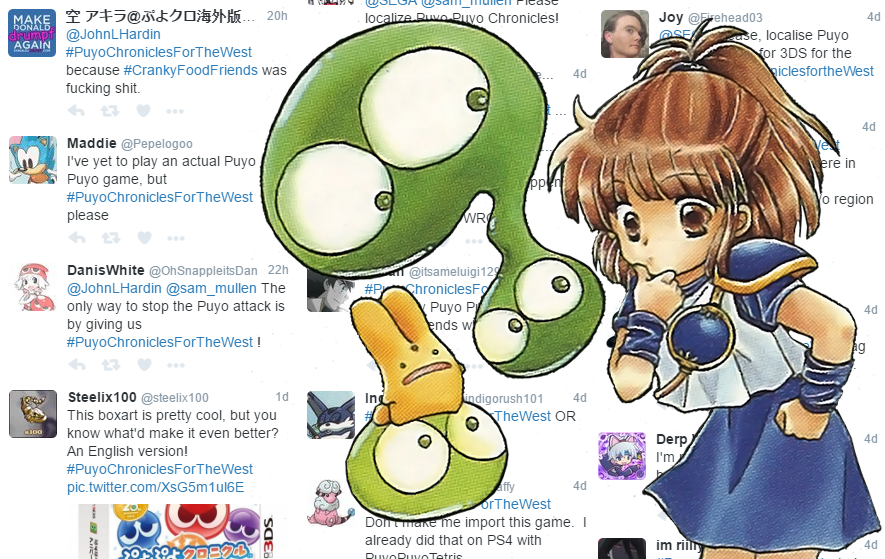
This article is from the opinion of the author only. None of the statements here are necessarily associated with SEGABits or SEGA as a whole.
Puyo Puyo Chronicles. This was a game that was expected to come out for the majority of the year, since it’s the 25th Anniversary of the franchise. Normally when it comes to anniversaries SEGA focuses their cards on Sonic, but people outside of Japan don’t know Puyo Puyo also gets attention with a sudden boom of merchandising and a new game. This also happened with Puyo Puyo’s 15th and 20th anniversary, where they got rather expansive games in the form of Puyo Puyo! 15th Anniversary and Puyo Puyo!! 20th Anniversary, respectively. The fact the franchise has endured for 25 years defying the “hiatus” problem many of SEGA’s franchises suffer from for one reason or another, should be a testament to it’s strength as an IP.
However, something is notably different this time around in contrast to the past.

The comments above are from the official trailer for Puyo Puyo Chronicles, which is dominated by English comments. Twitter also has a hash tag called #PuyoChroniclesForTheWest, and Puyo Puyo Chronicles was mentioned enough that even official SEGA/Atlus PR had some fun with it.
Great, thanks Twitter. @sam_mullen got crushed to death by your Puyo Chronicles tweets. RIP in Puyo, Sam. 😢 pic.twitter.com/GzEILMckPY
— John Hardin (@JohnLHardin) August 19, 2016
This is a rather weird turn of events that contrasts from the past. Puyo Puyo is not exactly a big series outside of Japan, in fact past attempts have failed to impress from a commercial standpoint. In the past trying to talk about Puyo Puyo at face value would cause people to dismiss it, worst case scenario they’ll ignorantly proclaim Puyo Puyo is a “ripoff” of Dr. Robotnik’s Mean Bean Machine or Kirby’s Avalanche. Even SEGA themselves don’t acknowledge the series much, since the series rarely gets mentioned with cameos and crossovers despite it technically being one of SEGA’s more notable franchises in recent years.
So, before we continue, it’s important to know the context as to why the franchise is notable in the first place.
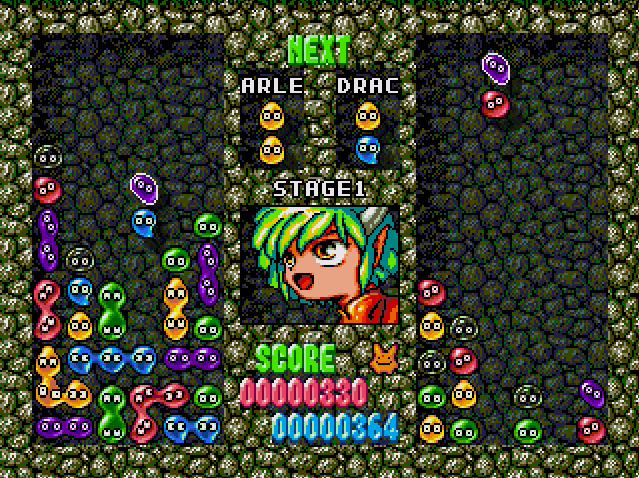
Puyo Puyo is a falling block game in the same vein as Tetris or Dr. Mario. You drop blobs down called Puyo and form chains in order to score points and beat your opponent by dumping garbage onto their field. At first it sounds like a simple premise, some would even stale, but the execution is what makes the franchise special. Puyo Puyo started off with a modest start, but eventually grew to something big because it tackled two key areas: Competition and Characters.
Puyo Puyo is not simply taking down your opponent with brute force like in the same way Tetris is, the game mechanics are especially designed to encourage the player to constantly be on their toes and have to consider making split second decisions that can make or break a game. For example, making a large chain can ensure a victory, but there’s a risk factor in the sense that you’re forcing yourself to reach the top and leaving yourself vulnerable to garbage. Likewise pelting the opponent with constant small chains can prevent them from recovering, but do it at the wrong time and you won’t have a large enough chain to counter theirs. In fact, the general flow of a match is more comparable to a fighting game, since you’re constantly mixing up your offensive and defensive options.
In essence, despite the simplicity at first glance, matches between skilled players can be very intense. In fact since the release Puyo Puyo Tsu, the Puyo Puyo franchise has often been hosted on the tournament scene, drawing further comparisons to a fighting game. These tournaments are notably enough to be hosted by events like Redbull 5G, with teams being formed and cash prizes at stake. Future titles would even experiment with new ways of playing like Super Attacks and Fever, though admittedly to more mixed results.
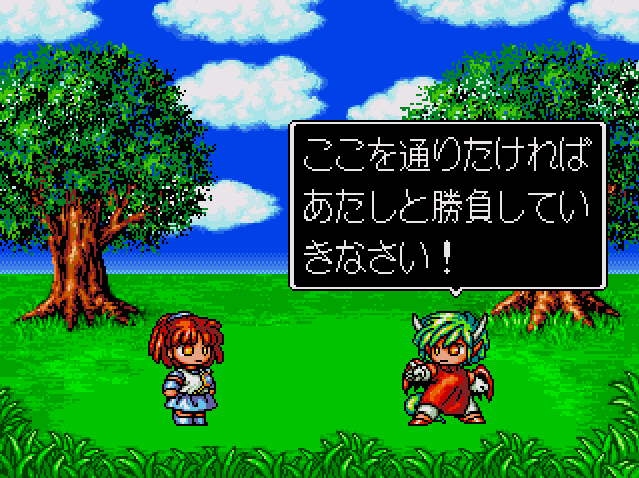
Then there was the characters. Before Puyo Puyo, puzzle games like Tetris, Dr. Mario, and Columns were rather bare. They functioned great and are fun, but you could tell any type of world building was not a priority. Puyo Puyo was special in that you had a cast of characters, each with their own quirk to help make them standout. The plots are never complex, but to compensate many of the characters interact with each other in a manzai-like fashion (ex. Arle being the sane “tsukkomi” and Draco/Suketoudara/whatever being the funny “boke”). At first the simplicity might not be appealing, but it works because it means you can easily pick a favorite character out of a large cast, and if there’s a character you don’t like they won’t stay on screen for long anyway. Plus the simplicity of the plots means the characters have breathing room to bounce off each other without being bogged down by exposition or tension, leading to more comedic moments overall.
Puyo Puyo after the huge success of it’s first two arcade games inspired many companies to try their own interpretation of the formula, leading to an influx of games during the 90’s with a similar premise. Examples include Nintendo’s Panel de Pon, Data East’s Magical Drop, Hudson Soft’s Panic Bomber, Capcom’s Super Puzzle Fighter, and even SEGA themselves with BakuBaku Animal. Even Tetris and Dr. Mario borrowed elements from Puyo Puyo from time to time, for example Tetris Battle Gaiden and Dr. Mario 64 both try to focus more on multiplayer and a cast of characters. In a way it’s influential in the same way Street Fighter or Super Mario Bros. is,which is reflected in the franchises enduring longevity.
So as to why Puyo Puyo failed to get attention outside of Japan despite being influential is a repeated case of bad timing. During the SNES and SEGA Genesis days, there was a competition to be “cool”. SEGA was trying to look like the badass of the industry, and Nintendo taking notice tried similar tactics like jabbing at SEGA when promoting Donkey Kong Country. Puyo Puyo was an “antithesis” in a sense since games with general Japanese influence do not catch on and tend to be edited to be less “Japanese”. This includes games like Mythical Ninja and Pocky & Rocky, which receive changes to stuff like boxart, sprites, and names to tone down Japanese elements. Puyo Puyo on the other hand goes into the extreme by changing the entire cosmetics to reference other franchises. Dr. Robotnik’s Mean Bean Machine being a tie-in to an American cartoon, while Kirby’s Avalanche would try to toughen up Kirby in advertisements, and Kirby himself being uncharacteristically a trash talker. As a side effect, these two games would overshadow Puyo Puyo by being more well known outside of Japan, hence why these two conversions are constantly brought up whenever Puyo Puyo is brought up.
The situation would only get worse later on. With the success of such franchises as Halo and Grand Theft Auto, people wanted to see a larger demand for more “mature” games. This demand would also eventually cause some franchises to “adapt” to mixed or negative results, which includes the Sonic and Bomberman series. During this time, puzzle games were also losing their muster, normally being regulated to low budget titles on the GBA, even more notable ones like Tetris. It was also an awkward time for SEGA since it was a general experimental phase, utilizing many IPs with ports or revivals to test the waters, and also them having bad press by the general public. The poor timing of games being released like Puyo Pop Fever caused them to tank, simply because it did not mesh well with the market and just brushed it off as nothing. Since Puyo Pop Fever, the series has again remained Japan only, likely under the assumption that there isn’t a market for Puyo Puyo overseas due the varies bombs. Said Japan-only games would be modest releases, low budget titles that would often recycle artwork and music with a likewise modest return.
Now back to the point as to why Puyo Puyo Chronicles is getting attention where other games haven’t. As mentioned it’s a contrast from the norm, where the series tends to be ignored due to being normally a Japan-only series. Also unlike something like the “Operation Rainfall” titles Xenoblade Chronicles, The Last Story, and Pandora’s Tower, Puyo Puyo is much more modest, so it would naturally be overlooked in favor of more “grand” games. But from my prospective it can be seen as a case of coincidences that whether because of ideal timing or just having the right elements that have managed to draw attention to a group of people, started to gain attention where other games have failed. An example of where this movement started is possibly the game Puyo Puyo Tetris.
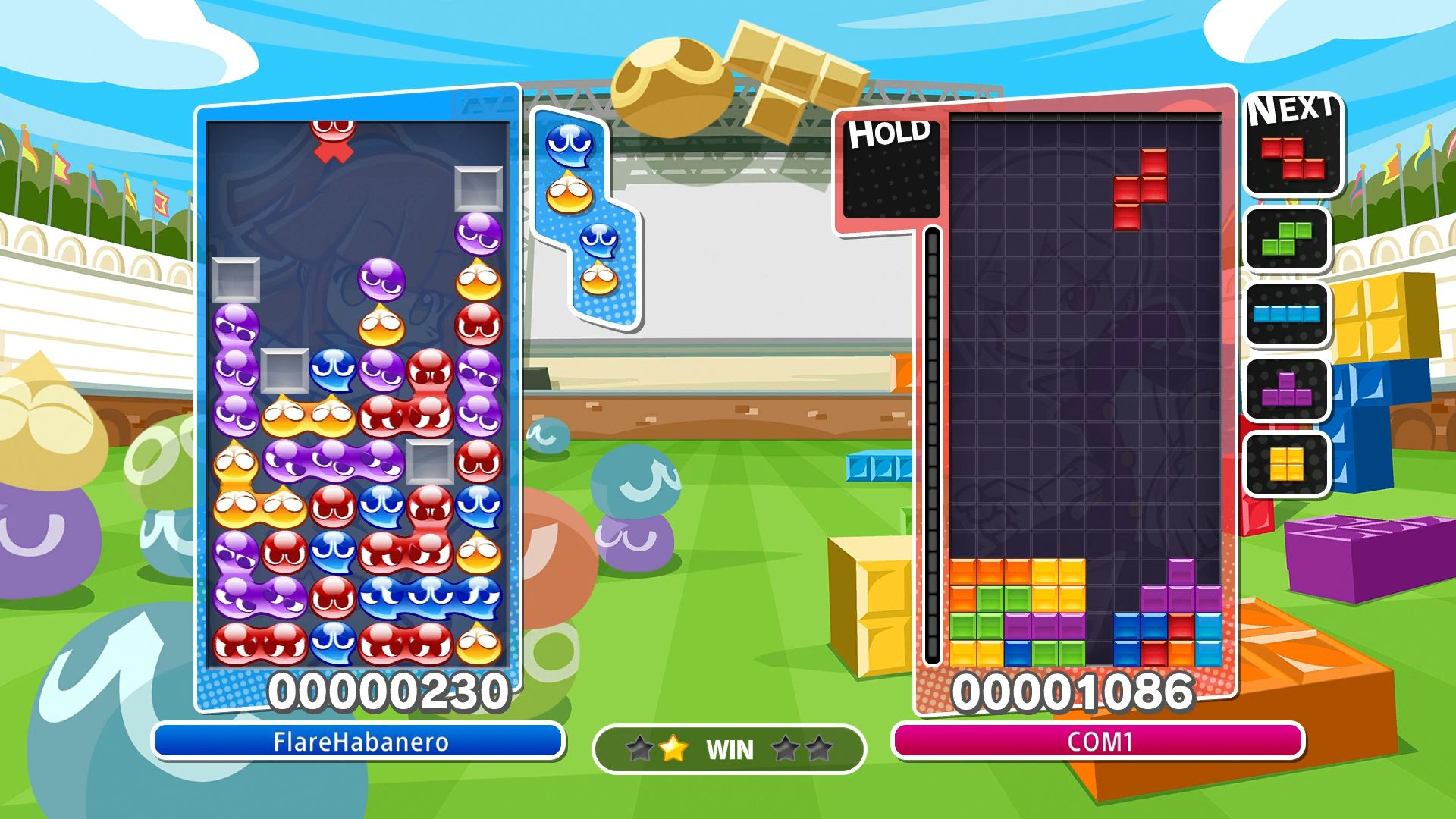
Puyo Puyo Tetris, in some sort of planet alignment type situation, was released at the perfect timing when it comes to both SEGA and Tetris. SEGA was getting bad blood from games like Aliens: Colonial Marines and both Sonic Lost World and Sonic Boom Rise of Lyric, while the Tetris brand was under controversy due to the (somehow) poorly programmed ports of Tetris Ultimate on PS4. In a way, Puyo Puyo Tetris was a relief of sorts from the controversy. It also helps that the game is available on a large selection of consoles that lack region locking, meaning it’s a very easy game to get and set up, and it’s a game in a market where “falling block” games of this type are scarce.
The game itself is what you would expect from any good Tetris title, including having the bread and butter mechanics like T-Spins, but because of it’s crossover elements with Puyo Puyo it sports a colorful presentation with a hint of comedy and cuteness. It also highlights the differences between Puyo Puyo and Tetris, causing curious strategies to be developed to counteract the differing ways to play. It’s simple clean fun anyone can enjoy for themselves, whether on a casual basis or something more intense. But because it’s a crossover, it also serves as a gateway to an otherwise unfamiliar franchise, similar to other crossover games like Super Smash Bros. or Marvel vs. Capcom.
The curious part is that, in a similar vein to Phantasy Star Online 2, people were asking for a release overseas. In a way it was redundant since the game was easy to obtain, due to the different platforms that ignore region locking and the game generally being “language friendly” due to navigation being self-explanatory. However, people show support for something they like, and Puyo Puyo Tetris wasn’t an exception. Sadly In the end it didn’t go anywhere, but this may be the precursor to the Puyo Puyo Chronicles movement.
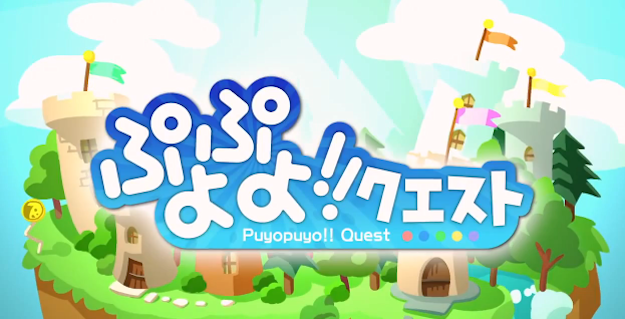
Alternatively, another source of sorts is Puyo Puyo Quest. Puyo Puyo Quest by itself is one of SEGA’s flagship mobile games in Japan, estimated to rake in at least 500 million yen. The game is a Puzzle RPG comparable to Puzzles & Dragons, with a lot of weekly and daily events and a lot of characters to keep the player engaged. Normally mobile games have a bad reputation in the west for the alleged “pay 2 win” implications (which still holds true to an extent even with this game), but Puyo Puyo Quest still managed to carve out a small but dedicated group of players outside of Japan. In some cases it even serves as a gateway to the franchise as a whole, and thanks to the easy access it’s not hard to do so.
The game itself encourages interaction between players, due to the multiplayer features making it easier to get materials needed to level up or evolve characters. Also as mentioned there are events that often highlight exclusive cards in limited quantity, so being able to successfully collect and max out a card of your favorite character can be satisfying and even considered bragging rights. When you combine both, it means that naturally there will be a community formed in order get the best experience possible.
Both games regardless of what started a basis have one thing in common: The internet. Because of social media like Twitter or Tumblr, or fansites (including this very one) talking about a particular game, it’s easy to gain some sort of attention. Puyo Puyo is a mere example compared to dozens of other games (even media in general) that have gained some sort of cult following because a group of people talked about how amazing something is. Without the internet being a tool to express how good or bad something is, many things would still be misunderstood or flat out lost. In fact, many of SEGA’s own IPs could fall into this catagory, because whether of poor timing or marketing, many would of simply faded away if not for dedicated fanbases talking about games and supporting them at every opportunity like NiGHTS into Dreams, Jet Set Radio, or Shenmue, to name a few.
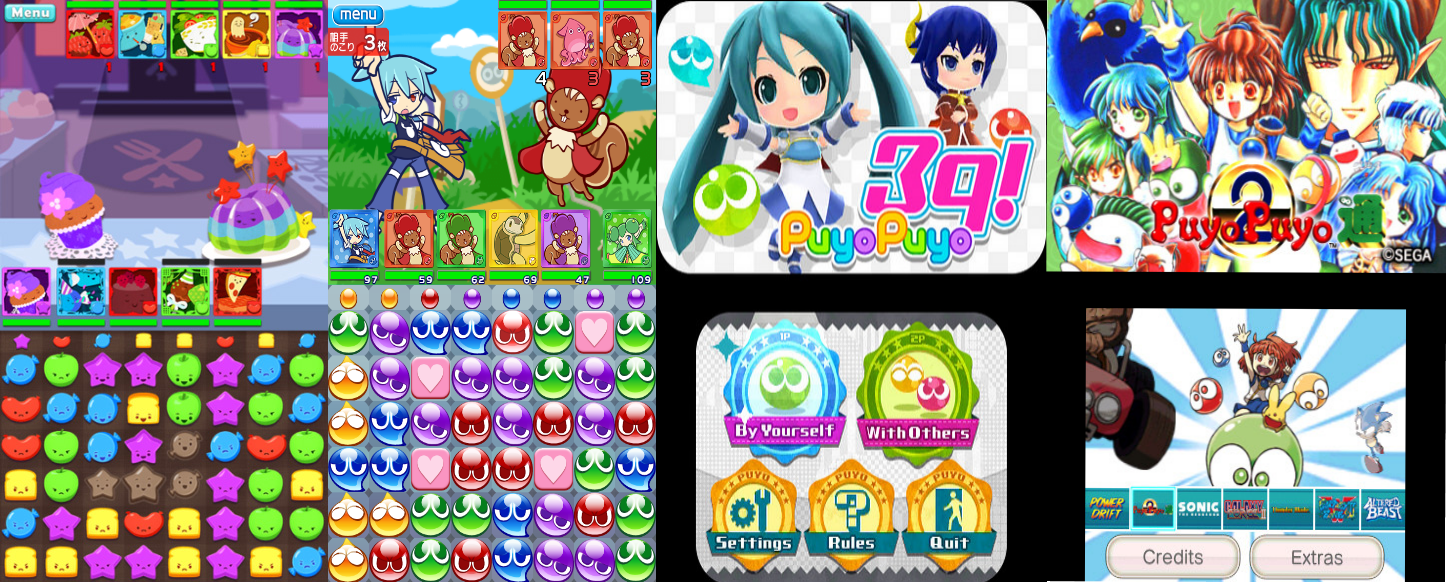
Between 2014 and now, some coincidences have popped up that add more fuel to the fire. The Cranky Food Friends controversy due to it being a reskin of Puyo Puyo Quest, the references in the Hatsune Miku: Project Diva games (most notably Hatsune Miku: Project Mirai DX with the Puyo Puyo 39 minigame), SEGA 3D Classics Collection containing an arcade perfect port of Puyo Puyo Tsu, SEGA actually localizing games more often thanks to the help of Atlus. The last one in particular might be the most important detail of them all actually, since it means a more niche game like Puyo Puyo Chronicles has a fighting chance unlike in the past. Again, these confidences tie into the internet being a tool of sorts. Without the internet, we wouldn’t push for SEGA 3D Classics Collection to have a release in Europe (Arguably in North America too), or be blissfully unaware that Cranky Food Friends was hiding a dark secret.
As to whether or not the game will actually get localized at all, is up for debate. The fact SEGA/Atlus employees are paying attention is a good sign that they at least acknowledge people are interested in this game. If in the hypothetical situation it does get a localization likely far later into 2017, but whether or not it will get stuff like an English dub (considering the really half baked attempt with Puyo Pop Fever, maybe not) may not happen. It may even get some type of port in the future, since Puyo Puyo is the type of franchise that loves to port games onto varies consoles. But if that doesn’t happen, remember that unlike Puyo Puyo Tetris, simply importing Puyo Puyo Chronicles is not an easy task. Due to the 3DS region locking, a person would need to “cheat the system” by either modding or importing a Japanese 3DS, both having their own cons (risk of breaking warranty and bricking vs. spending more money).
Regardless, don’t hold your breath, but at the same time stay optimistic. Remember though, in the end this is till a rather niche series despite it’s pedigree, so it can easily be skipped over again if deemed not profitable.
Ad:

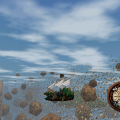



I will ignore you and hold my breath
I imported both the Vita version and Xbox One version of Puyo Puyo Tetris. Now, on one hand I barely forgive them for not bringing it over; for a puzzle game about falling shapes, there’s a TON of text to translate. On the other hand, I doubt the story is anything more than tons of random jokes and puns with a thin narrative tying it together, in which case a small localization team could fart out a passable English version fairly quickly. Again, this isn’t a game that necessarily even needs an “accurate” translation, since most Western fans care more about the gameplay and characters than the underlying story.
Did someone ask for English translation of Puyo Puyo Tetris?
Here you go, https://www.youtube.com/watch?v=-V6FDfwWngc
Enjoy 🙂